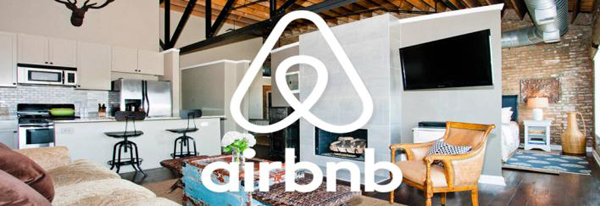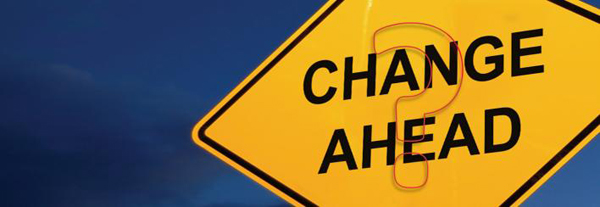By Brett Russell, Ryan Wall, and Adam Lair
Presentations at this year’s Lodging Conference shed light on how far the U.S. hotel industry has come, as well as how long the current upturn could last.
The Lodging Cycle
Just last year, at hotel conference events across the nation, hoteliers were sharing strategies for facing an inevitable downward trend in the industry. The thought was that, after years of stellar performance, the current up-cycle was approaching its last year or two, a premise supported by historical data showing how previous cycles, from peak to peak, lasted about ten years. It would follow that the next peak for most U.S. hotel markets would occur in 2016/17.
At the 2015 Lodging Conference, held October 6–9 at the Arizona Biltmore Resort in Phoenix, the consensus had shifted: the current cycle differs in kind from those that came before. Based on fundamental economic and hotel-specific data as of the fourth quarter of 2015, the U.S. hotel industry can expect two to four more years of growth.
Presentations and breakout sessions at the Lodging Conference, led by some of the hotel industry’s most seasoned experts, reinforced the positive outlook. STR forecasts year-end 2015 RevPAR growth of 6.8%, moving slightly lower to a projected 6.0% in 2016. A rise in already strong average rates is expected to drive this growth, with occupancy projected to remain strong.
Lodging Economics contends that while some markets will be affected sooner than others by an influx of new hotel supply, the overall level of supply in the U.S. is still significantly lower than where it stood during the last peak. This suggests that the current cycle is in an expansion stage, and Lodging Economics’ data show the cycle’s maturity starting in 2017 and continuing through 2019.
HVS argued that healthy hotel values, cap rates, and an active transactions market should help extend the current cycle. HVS projects an overall rise in hotel values based on forecasted average rate growth, the low cost of capital, and positive leverage. On a more micro level, HVS forecasts supply peaks to occur in the majority of the Top 25 STR Markets from 2016 through 2018. Capitalization rates should be relatively stable over the next two years, as a rise in interest rates is offset by increasing NOIs and as buyers compete for quality assets.
Supply
Some of the positive energy at the conference was dampened by concern about the potential impacts of impending new supply. But given projected levels and timetables, new supply is unlikely to end the current upward cycle. HVS presentations showed that an influx of new supply in certain U.S. markets in 2016 and 2017 will, in fact, directly affect local hotel values. These isolated value declines, however, are expected to be minimal and short-term in nature, typically beginning one or two years after the peak in supply and lasting for only one year.
According to data from Lodging Economics, 507,000 rooms associated with 4,038 hotel projects are either under construction, set to break ground in the next 12 months, or in the early planning stages. This number is anticipated to increase to 675,000 by year-end 2017. While the numbers seem imposing, they fall well below the 785,000 rooms (5,883 projects) that were in the pipeline during the prior peak. These figures suggest that, on a macro level, new supply is not likely to be too burdensome for most markets. Some markets, however, including New York City, Houston, Miami, Seattle, and Austin, have a pipeline of rooms in excess of 20% of their current room inventory, a ratio that could make conditions more challenging for absorption.
Impact of New Brands and Airbnb
The supply picture in many markets is being muddled further by the continued introduction of new brands. Hilton, Starwood, and others have introduced new brands in the past year, many geared toward capturing demand from the millennial travel segment. Even more new flags are on the horizon for 2016, as major brands position their hotel products to compete for this important segment of demand.
Airbnb and other online rental programs continue to gain traction, particularly in resort and urban markets. Data from groups tracking Airbnb and other online rental programs even suggest that meeting planners are looking at these products to help increase the bed base in popular destinations. Most of the growth in this product type occurs in urban markets and seems to correspond to areas that have strong supply pipelines. In markets like New York City and Miami, the inventory of Airbnb-type units is approaching 5% of total hotel supply and its captured share of demand is almost 7%. This may suggest that the product is being used to fill the void until more traditional hotel units come online. It may also signal a fundamental switch of consumer trends, which could continue to gain traction. Like that of new supply, however, the threat from Airbnb-type accommodations to the overall hotel industry is minimal and unlikely to be a catalyst for a downturn.
Values & Transactions
HVS foresees a continued overall rise in hotel values, fueled by increasing bottom lines, low interest rates, and competition among buyers for assets. While the timing and degree of impact from new supply varies from market to market, values for the nation as a whole are expected to continue to rise through 2017, before realizing a slight decline in 2018. This national decline, however, is anticipated to be short-lived and to not exceed 2%. In the meantime, hotel values are expected to finish 2015 very strong, with the top ten markets in HVS’s annual Hotel Valuation Index projected to increase from 16% to 22%.
The hotel transactions market is still going strong, fueled by the low cost of capital and overall strong NOIs. Through the first half of 2015, transactions activity for hotels worth $10 million or more was up 59%; price per key for these assets increased 31% during the same period. Given the flurry of U.S. hotel transactions in the second half of 2014, the 2015 year-end numbers may not look as impressive—still, the transactions market remains very active.
A closer look at the prices paid for hotels this year reveals how strong the transactions market stands. In the first half of 2015, 20 sales occurred in excess of $750,000 per key versus just five in the first half of last year. Seven sales in 2015 have surpassed the $1,000,000 mark in price per key—the highest number of sales ever at that threshold.
What’s Next?
Overall, the U.S. hotel industry continues to break records in terms of values, performance, and transactions. While there are some headwinds (notably new supply in some top markets), no serious threats appear on the horizon to curtail the successes of the current cycle. Discussions at the Lodging Conference revealed four essential prompts for hoteliers in preparation for the future:
Watch markets worldwide—Declining economies in China and Brazil could impact some U.S. markets.
Focus on supply growth in your own market.
Pay attention to the progress of Airbnb and such lodging services in urban and resort markets.
Stay tuned to Federal Reserve interest rate increases.
In the end, the industry is enjoying one of the strongest and longest periods of growth on record, and industry participants are keen not to take this for granted. The evidence ranges from owners and operators running more efficient hotels, to developers maintaining sustainable supply growth, to more conservative underwriting from lenders. Such well-guided action, prompted by lessons learned from the last recession, should stem many negative effects of an eventual downturn. For the next several years, however, the U.S. hotel industry should continue along its solid track.




